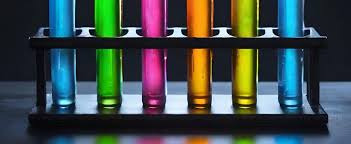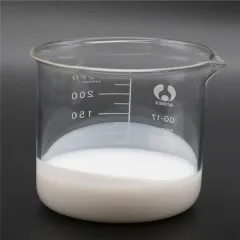Commonly utilized additives in plastic shade matching consist of dispersants, lubes, diffusion oils, combining representatives, compatibilizers, etc. Frequently encountered material additives consist of flame retardants, strengthening agents, brighteners, UV preventions, antioxidants, anti-bacterial agents, antistatic agents, etc. One of the most usual ones are fillers for cost reduction or physical adjustment, such as light calcium carbonate, hefty calcium carbonate, talc, mica, kaolin, silica, titanium dioxide, red mud, fly ash, diatomaceous planet, wollastonite, glass grains, barium sulfate, calcium sulfate, etc, along with natural fillers, such as timber flour, corn starch, and other farming and forestry spin-offs. Filling up and reinforcing products include glass fiber, carbon fiber, asbestos fiber, artificial natural fiber, and so on
Intend the above additives are included in the product’s raw materials. Because situation, they have to be contributed to the material raw materials in the very same percentage in the color-matching proofing so as not to produce a color difference in the subsequent production.
(Additives for Plastic Color Matching)
Dispersant
Dispersant kinds consist of fatty acid polyurea, hydroxy stearate, polyurethane, oligomeric soap, and so on
Today, the generally utilized dispersant in the industry is lubricating substance. Lubricants have great dispersibility and can likewise enhance the fluidity and demolding performance of plastics during molding.
Lubricants are separated into interior lubes and exterior lubricating substances. Interior lubricants have a certain compatibility with materials, which can decrease the cohesion between resin molecular chains, lower melt thickness, and boost fluidness. Outside lubricating substances have bad compatibility with resins. They adhere to the surface of molten resins to develop a lubricating molecular layer, consequently reducing the friction in between resins and processing equipment.
Lubricants
According to the chemical structure, they are generally split into hydrocarbons, metal soaps, lubricants that play a demolding role, fatty acids, fat amides, and esters.
Such as vinyl bis ceramide (EBS)
EBS (Ethylene Bis Stearamide), likewise referred to as plastic bis stearamide, is a highly reliable internal and outside lubricating substance and dispersant extensively made use of in the plastic processing market. It is suitable for all thermoplastic and thermosetting plastics, consisting of however not limited to polyethylene (PE), polypropylene (PP), polystyrene (PS), polycarbonate (PC), polyamide (PA), polyester (PET/PBT), polyurethane (PU), phenolic material, epoxy resin, etc. Here are several of the primary duties of EBS in these plastics:
(EBS Ethylene Bis Stearamide Emulsion)
Dispersion
As a dispersant, EBS can assist evenly spread fillers and pigments during plastic handling, stay clear of cluster, and improve the diffusion and security of pigments and fillers. This helps improve the color uniformity and mechanical properties of the end product. As an example, in masterbatch manufacturing, EBS can ensure that pigment fragments are uniformly distributed in the service provider material to ensure that constant shade is exhibited in subsequent plastic products.
Interior lubrication
In the plastic thaw, EBS can lower the rubbing between particles and the shear anxiety of the plastic melt, consequently lowering the melt thickness and making the melt flow smoother. This helps reduce pressure during extrusion or injection molding, decreases handling temperatures, and reduces molding cycles, while likewise decreasing energy usage, improving processing effectiveness, and improving the service life of devices.
Exterior lubrication
EBS develops a thin lubricating film on the plastic surface, which can minimize the rubbing between the plastic melt and the steel mold, boost demolding performance, and prevent sticking of plastic items during molding. This not just helps to improve the surface area finish of the item and reduce flaws but likewise streamlines the post-processing procedure and enhances production effectiveness.
Other features
In addition to the above primary functions, EBS can likewise be made use of as an antistatic agent to improve the antistatic residential or commercial properties of plastic products and decrease troubles such as dust adsorption triggered by fixed electrical energy. In some applications, EBS can likewise improve the weather condition resistance and chemical resistance of plastic products.
In the injection molding procedure, when completely dry tinting is used, surface area therapy representatives such as white mineral oil and diffusion oil are usually included throughout blending to play the role of adsorption, lubrication, diffusion, and demolding. When readjusting the shade, it must likewise be added to the raw materials symmetrical. Initially, include the surface area treatment agent and shake well, after that include the shade powder and tremble well.
When picking, the temperature resistance of the dispersant need to be determined according to the molding temperature level of the plastic raw material. From a price point of view, in principle, if a medium and low-temperature dispersant can be used, a high-temperature immune one should not be picked. High-temperature dispersants require to be immune to more than 250 ° C.
Distributor of EBS Ethylene Bis Stearamide Solution
TRUNNANOÂ is a supplier of 3D Printing Materials with over 12 years experience in nano-building energy conservation and nanotechnology development. It accepts payment via Credit Card, T/T, West Union and Paypal. Trunnano will ship the goods to customers overseas through FedEx, DHL, by air, or by sea. If you want to know more about EBS Emulsion, please feel free to contact us and send an inquiry.
Inquiry us

